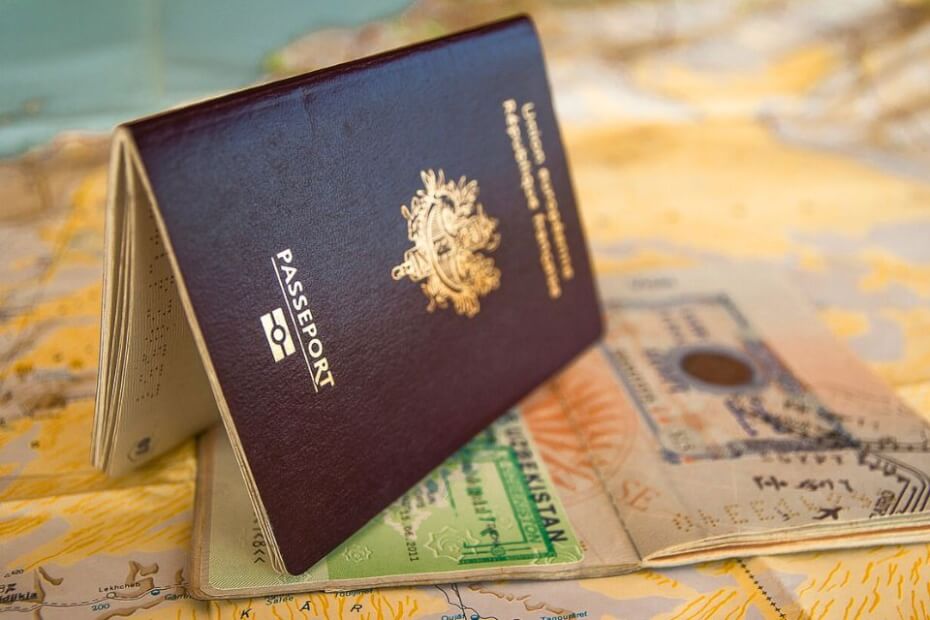
The United Kingdom (UK) Home Office has made it easier for non-British residents to create a UK Visas and Immigration (UKVI) account.
The government’s recently updated guidelines show that those with Biometric Resident Permits (BRPs) can now create a UKVI account.
The change allows foreign UK residents to create their accounts without an invitation from the Home Office.
The UK is currently transitioning to a “digital by default” immigration system, from physical representations of immigration statuses to online records.
This means replacing BRPs and passport endorsements such as wet ink stamps or vignette stickers with eVisas.
An eVisa is an online record of a person’s immigration status in the UK, including any conditions that apply to the holder.
A UKVI account is the Home Office’s digital platform for foreign residents to view their eVisa and prove their immigration status.
This is crucial for proving their right to enter, stay, work, rent, or claim public funds in the UK.
Simplifying UKVI accounts and accessing eVisas
Previously, BRP holders needed an invitation from the Home Office to create a UKVI account.
The Home Office began contacting BRP holders in April, emailing them a link and instructions on creating a UKVI account.
Now that all BRP holders can set up their accounts, they must do so before their BRP expires or before the year ends.
“If you have a biometric residence permit (BRP) that expires on 31 December 2024, you can now create a UKVI account and access your eVisa,” the updated guidelines stated.
The guidelines stressed, “You should do this before the expiry date of your BRP.”
It also included a five-minute video tutorial on creating a UKVI account and accessing their eVisas.
The guidelines also alerted BRP holders that their eVisa may not be viewed immediately after successfully creating a UKVI account.
“If you cannot see your eVisa details as soon as you create your UKVI account, there is nothing you need to do,” the guidelines read.
The Home Office will email individuals who cannot immediately view their eVisas as soon as it becomes available.
Those who cannot view their eVisa in their UKVI account can use their BRO to prove their immigration status until their eVisa becomes available.
Rushing the transition to a digital system

The UK government plans to replace physical BRPs with digital records by 2025.
By 1 January 2025, the Home Office will only issue eVisas via the UKVI platform.
The move to a digital immigration system aims to improve the country’s border security and streamline immigration processes.
Unlike a physical document, an eVisa is more secure, with no chance of being stolen or tampered with.
It also eliminates the need to wait for the physical document after the decision on an immigration application has been released.
The UK’s digital immigration system is also designed to make it easier for migrants to view their immigration status online or through a mobile app.
While digital records are more convenient and secure, many raised concerns about the transition’s timeline.
Human rights groups and immigration experts are concerned that the rushed timeline could leave millions of migrants unable to prove their UK immigration status.
It can also adversely affect vulnerable people, such as the elderly, refugees, and survivors of trafficking and torture.
While transitioning to an eVisa should not affect one’s immigration status in the UK, many fear that they could lose their rights.
Concerns and issues about UKVI accounts
One primary concern that human rights groups raise is that not everyone can easily use the new digital system.
Elderly people, individuals with limited computer skills, and people without internet access might struggle to access their eVisa.
The transition process is even more complicated for those with passport stamps or vignette stickers.
They must first apply for a “no-time limit” (NTL) to get a BRP before transitioning to an eVisa.
Millions could be unable to rent, get a job, or access essential services because they were unable to create a UKVI account before the deadline.
Another worry is the reliability of the Home Office’s UKVI account platforms on the web and the mobile app.
EU citizens living in the UK have been using the UKVI system under the European Union Settlement Scheme (EUSS).
Reports indicate that the platform displays incorrect or mixed data, such as showing the correct name but a different photo.
These errors can cause confusion and delays, making it hard for people to prove their legal rights in the UK.
The Home Office also faced challenges notifying people with BRPs, as many contact emails belong to migrants’ lawyers.
Individuals with BRPs can still create UKVI accounts after the 31 December 2024 deadline.
However, they may only realize this when they can’t prove their rights upon returning to the UK from a trip abroad or claiming benefits.
Recommendations for a smoother transition

Advocacy groups suggest giving people more time to transition to the new digital immigration system.
They recommend providing clear instructions, user-friendly tools, and extra help for those who need it.
Monique Hawkins from The3Million, a group advocating for EU citizens in the UK, proposed providing a travel document as proof of their immigration status.
This could be a physical card with a digital barcode, which many countries worldwide already use.
There should also be a 24/7 support line for people having trouble accessing their eVisas or digital records.
A thorough review of the new system before making it mandatory could identify and fix potential issues.
Hawkins also recommended that the government focus on ensuring the transition to eVisas is smooth and successful.
She said the transition to eVisas while rolling out the new UK Electronic Travel Authorization (ETA) scheme could be disastrous for many.
The UK ETA scheme is a pre-screening system for non-visa nationals visiting the UK for visits of up to six months.
The UK’s complicated immigration system is already causing problems for many immigrants.
Fixing the UKVI accounts platform and enforcing the new UK ETA system may burden the UK’s digital immigration system even more.
This may worsen the issues and lead to more worry and confusion for everyone affected.

